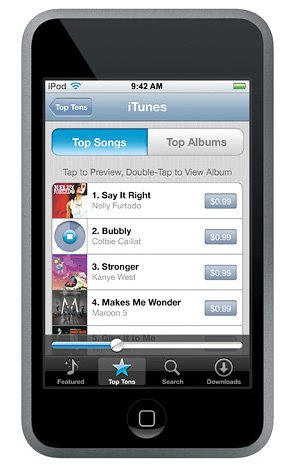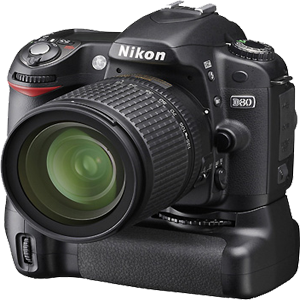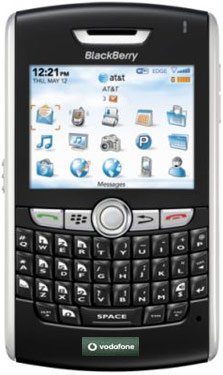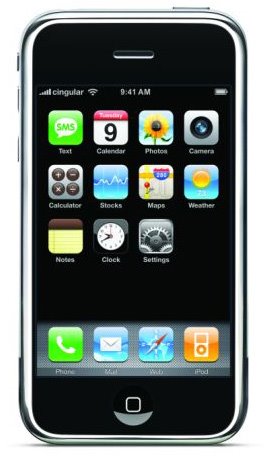
 All programs will be portable thus packaged so they run from a removable storage device such as a USB drive. In other words, the software provided will not install itself on your local hard drive and will run just by double clicking it. The good thing about portable software is that you can store the folders containing the software virtually anywhere, CD-RW, USB Flash Drive, or your Local Drive. I will also include the programs in U3 format for those who prefer to run them off a U3 Smart USB Flash Drive.
All programs will be portable thus packaged so they run from a removable storage device such as a USB drive. In other words, the software provided will not install itself on your local hard drive and will run just by double clicking it. The good thing about portable software is that you can store the folders containing the software virtually anywhere, CD-RW, USB Flash Drive, or your Local Drive. I will also include the programs in U3 format for those who prefer to run them off a U3 Smart USB Flash Drive. Software Installation Instructions:
Software Installation Instructions:  For Portable Version:
For Portable Version:Uncompress the file and run the executable file.
Use the U3 installation wizard from the U3 Smart Menu to install the app to your U3 Smart system.
Clean Adware, Rootkits, Spyware, Trojans, Viruses and Worms. Malware is short for malicious software. It is a general term that refers to any software or program code designed to infiltrate or damage a computer system without the owner's informed consent. This guide will show you how to remove these infections and protect yourself from future infections using free software.
FACT: 89% of consumer PCs are infected with spyware
First Step - Cleaning Up The Windows OS
In this step we will clear up space from your system by removing temporary files, browser history, cookies, browser forms, and registry errors with the following applications.
 CCleaner
CCleanerCCleaner is system optimization and privacy tool. It removes unused files from your system - allowing Windows to run faster and freeing up valuable hard disk space. It also cleans traces of your online activities such as your Internet history. But the best part is that it's fast.
Downloads:
 - Download
- Download Instructions - Download and run. Go to the "Windows" tab, then select "Run Cleaner". Finally select the "Registry" button and select "Scan for Issues" when it finishes scanning, select "Fix Selected Issues", then "Fix All Selected Issues".
Instructions - Download and run. Go to the "Windows" tab, then select "Run Cleaner". Finally select the "Registry" button and select "Scan for Issues" when it finishes scanning, select "Fix Selected Issues", then "Fix All Selected Issues". Prefetch Cleaning Warning - The Advanced section has a performance slowing cleaning option "Old Prefetch data", never select this option for cleaning as it will increase application and Windows load times. Cleaning the Prefetch folder is a Myth and actually hurts performance. Windows XP automatically cleans this folder at 128 entries back to the 32 most used prefetch files. Anyone who claims this should be cleaned for ANY reason does not understand how Windows Prefetching works.
Prefetch Cleaning Warning - The Advanced section has a performance slowing cleaning option "Old Prefetch data", never select this option for cleaning as it will increase application and Windows load times. Cleaning the Prefetch folder is a Myth and actually hurts performance. Windows XP automatically cleans this folder at 128 entries back to the 32 most used prefetch files. Anyone who claims this should be cleaned for ANY reason does not understand how Windows Prefetching works. CleanUp!
CleanUp!CleanUp! is a powerful and easy-to-use application that removes temporary files created while surfing the web, empties the Recycle Bin, deletes files from your temporary folders and more.
Downloads:
 - Download
- Download Prefetch Cleaning Warning - Download and run. Select the "Options" button, uncheck "Delete Prefetch files" and then "OK". Next select the "CleanUp!" button and when it is finished select the "Close" button and then "Yes" to logoff and reboot your system.
Prefetch Cleaning Warning - Download and run. Select the "Options" button, uncheck "Delete Prefetch files" and then "OK". Next select the "CleanUp!" button and when it is finished select the "Close" button and then "Yes" to logoff and reboot your system.Second Step - Scanning And Cleaning
In this step we will perform a few scans with multiple scanners to rid the system of malware.
 Rogue/Suspect Anti-Spyware Products & Web Sites - The Malware removal market is being flooded with bogus scanners, some even closely resemble legitimate programs like Spybot Search and Destroy. These Rogue programs can produce false positives, leave actual Malware installed or worse even install Malware. I strongly recommend only using the following programs and uninstalling any other scanners you may have tried.
Rogue/Suspect Anti-Spyware Products & Web Sites - The Malware removal market is being flooded with bogus scanners, some even closely resemble legitimate programs like Spybot Search and Destroy. These Rogue programs can produce false positives, leave actual Malware installed or worse even install Malware. I strongly recommend only using the following programs and uninstalling any other scanners you may have tried. Clean and Infected File Sharing Programs - Microsoft Windows Defender will detect numerous Peer to Peer programs as Malware. If you are 100% positive you are using a non Malware infected file sharing program select ignore on these entries. Use this list to be sure.
Clean and Infected File Sharing Programs - Microsoft Windows Defender will detect numerous Peer to Peer programs as Malware. If you are 100% positive you are using a non Malware infected file sharing program select ignore on these entries. Use this list to be sure. Cookies are not Spyware - While certain cookies can still pose some privacy concerns and if you wish to remove them, it will do no harm. The point is, when you find many of these, after running a standard scan, you should not get excited that you are infected with Malware.
Cookies are not Spyware - While certain cookies can still pose some privacy concerns and if you wish to remove them, it will do no harm. The point is, when you find many of these, after running a standard scan, you should not get excited that you are infected with Malware. Before we begin disable or shut down any running Anti-Virus and Anti-Spyware software your system has installed.
Before we begin disable or shut down any running Anti-Virus and Anti-Spyware software your system has installed.First we will run a few applications that will target viruses.
 Trend Micro Sysclean Package
Trend Micro Sysclean PackageTrend Micro Sysclean Package is a stand-alone fix package that incorporates the Trend Micro Malware and Spyware scanning engines as well as the Trend Micro Damage Cleanup Engine. This tool will terminate all detected malware/spyware instances in memory, remove malware/spyware registry entries, remove malware/spyware entries from system files, scan for and delete all detected malware/spyware copies in all local drives.
Downloads:
 - Download
- DownloadLatest Virus Pattern File: Download
Latest Spyware Pattern File: Download
 Instructions - Download all the files; the latest Virus Pattern File: lptXXX.zip and the latest Spyware Pattern File: ssapiptnXXX.zip (Ssapiptn.Da5). After you unzip the "lptXXX.zip" and "ssapiptnXXX.zip" pattern files, move them to the "TrendMicroSysClean" folder then run "sysclean".
Instructions - Download all the files; the latest Virus Pattern File: lptXXX.zip and the latest Spyware Pattern File: ssapiptnXXX.zip (Ssapiptn.Da5). After you unzip the "lptXXX.zip" and "ssapiptnXXX.zip" pattern files, move them to the "TrendMicroSysClean" folder then run "sysclean". Avira AntiVir
Avira AntiVirAvira AntiVir Personal is a German made, comprehensive, easy to use antivirus program, designed to offer reliable free of charge virus protection to home-users with a 99.7% Malware Detection Rate.
Downloads:
 - Download
- Download Instructions - Execute or Run AVWIN.exe, it should automatically execute a quick system test. Now, select the drives you would like to scan and run the scan.
Instructions - Execute or Run AVWIN.exe, it should automatically execute a quick system test. Now, select the drives you would like to scan and run the scan. McAfee Avert Stinger
McAfee Avert StingerStinger is a stand-alone utility used to detect and remove specific viruses. It is not a substitute for full anti-virus protection, but rather a tool to assist administrators and users when dealing with an infected system. Stinger utilizes next generation scan engine technology, including process scanning, digitally signed DAT files, and scan performance optimizations.
Downloads:
 - Download
- Download Instructions - Run Stinger.exe and execute the scan by clicking 'Scan Now'.
Instructions - Run Stinger.exe and execute the scan by clicking 'Scan Now'. ESET Nod32 Antivirus System
ESET Nod32 Antivirus SystemIntegrated, Real-Time Protection against viruses, worms, trojans, spyware, adware, phishing, and hackers. Best detection, fastest performance & smallest footprint. Nod32 Antivirus System provides well balanced, state-of-the-art protection against threats endangering your PC.
Downloads:
 - Download
- Download Instructions - Run nod32_20090420.exe Click next and on the next screen check the box and continue. If you would like for the application to scan and clean automatically click on 'Scan and Clean' otherwise just run a 'Scan'.
Instructions - Run nod32_20090420.exe Click next and on the next screen check the box and continue. If you would like for the application to scan and clean automatically click on 'Scan and Clean' otherwise just run a 'Scan'. McAfee Virus Scan
McAfee Virus ScanMcAfee VirusScan Command Line Scanner offers advanced anti-virus scanning technology in a UNIX-based or Microsoft Windows-based utility. You get comprehensive threat detection and cleaning with command-line granular control. However this application is written to easily operate the DOS line scanner. It is also known as Bart's McAfee VirusScan GUI Wrapper.
Downloads:
 - Download
- DownloadLatest SuperDat File (sdatxxxx.exe) - Download
**(where xxxx is the version number, for example sdat4290.exe)
 Instructions - After you have downloaded both the application and the latest SuperDat file make sure you execute the following instructions precisely. Make a new folder on the root of your Hard Drive and name it mcafee. Example - C:\mcafee Place the SuperDat File in the mcafee folder we have just created. Now you must unpack it using the "/e" parameter and to do so, use the RUN command under the START menu and type in C:\mcafee\sdat####.exe /e (#### must be replaced with the numbers of your sdat.exe). When unpacking you will not see anything happen for about 20 seconds, just wait for it. Once it is finished unpacking the files, place them in the McAfeeVirusScan folder you extracted folder from the McAfeeVirusScan.zip. Some files will be replaced, so do not be alarmed if you are asked permission to replace them by your computer. Now that we are done, run the SCANGUI.exe file and check the preferences you would like to run under and proceed with the 'scan'.
Instructions - After you have downloaded both the application and the latest SuperDat file make sure you execute the following instructions precisely. Make a new folder on the root of your Hard Drive and name it mcafee. Example - C:\mcafee Place the SuperDat File in the mcafee folder we have just created. Now you must unpack it using the "/e" parameter and to do so, use the RUN command under the START menu and type in C:\mcafee\sdat####.exe /e (#### must be replaced with the numbers of your sdat.exe). When unpacking you will not see anything happen for about 20 seconds, just wait for it. Once it is finished unpacking the files, place them in the McAfeeVirusScan folder you extracted folder from the McAfeeVirusScan.zip. Some files will be replaced, so do not be alarmed if you are asked permission to replace them by your computer. Now that we are done, run the SCANGUI.exe file and check the preferences you would like to run under and proceed with the 'scan'.Now we will run a few applications that will target SpyWare.
 Spybot - Search and Destroy
Spybot - Search and DestroySpybot - Search and Destroy detects and removes spyware, a relatively new kind of threat not yet covered by common anti-virus applications. Spyware silently tracks your surfing behavior to create a marketing profile for you that is transmitted without your knowledge to the compilers and sold to advertising companies.
Downloads:
 - Download
- Download Instructions - Run SpybotSD, select "Update", "Search For Updates", "Search", check the box next to each update and select "Download Updates". When this is finished go to "Settings", "Ignore products", "All products" Tab, right click on "Product", left-click on "Deselect all". Finally select "Search and Destroy", "Check for problems" and after scanning is complete "Fix selected problems".
Instructions - Run SpybotSD, select "Update", "Search For Updates", "Search", check the box next to each update and select "Download Updates". When this is finished go to "Settings", "Ignore products", "All products" Tab, right click on "Product", left-click on "Deselect all". Finally select "Search and Destroy", "Check for problems" and after scanning is complete "Fix selected problems". Ad-Aware
Ad-AwareAd-Aware protects you from spyware that secretly takes control of your computer, resulting in aggressive advertising pop-ups, sluggish computer activity and even identity theft through stolen private information.
Downloads:
 - Download
- Download Instructions - Run the Ad-Aware.exe file and as you do so, the program will prompt you for an update. SKIP IT and continue. Once the application's main screen pops up, execute a 'WebUpdate'. Once that is done, run a scan.
Instructions - Run the Ad-Aware.exe file and as you do so, the program will prompt you for an update. SKIP IT and continue. Once the application's main screen pops up, execute a 'WebUpdate'. Once that is done, run a scan. HijackThis
HijackThisHijackThis is an awesome utility which quickly scans your Windows computer to find settings that may have been changed by spyware, malware or other unwanted programs. HijackThis creates a report, or log file, with the results of the scan.
Downloads:
 - Download
- Download Instructions - Run the application and click on "Do a system scan and save a log file". It shouldn't take the application long to finish its process. After that is done, click on "Analyze This". HijackThis will attempt to upload the log file to Trend Micro's data analyzers and it should take a while for the page to load. Now click on "Stats on Your Log File Entries". Analyze the information and modify at your own risk by checking the box of the desired entry, from the the program, and finally click "Fix checked".
Instructions - Run the application and click on "Do a system scan and save a log file". It shouldn't take the application long to finish its process. After that is done, click on "Analyze This". HijackThis will attempt to upload the log file to Trend Micro's data analyzers and it should take a while for the page to load. Now click on "Stats on Your Log File Entries". Analyze the information and modify at your own risk by checking the box of the desired entry, from the the program, and finally click "Fix checked". Trend Micro RootkitBuster
Trend Micro RootkitBusterTrend Micro RootkitBuster is a rootkit scanner that scans hidden files, registry entries, processes, drivers, and Master Boot Record (MBR) Rootkits. In addition, RootkitBuster can also clean hidden files and registry entries.
Downloads:
 - Download
- Download Instructions - Instructions - Download, unzip and run. Check all boxes and then select "Scan". Delete any items it finds and run it again to confirm you are clean.
Instructions - Instructions - Download, unzip and run. Check all boxes and then select "Scan". Delete any items it finds and run it again to confirm you are clean. Once you have completely cleaned your system, if you are infected with any key loggers, you need to immediately change ALL your passwords you have typed in from that computer.
Once you have completely cleaned your system, if you are infected with any key loggers, you need to immediately change ALL your passwords you have typed in from that computer.  In order to insure maximum malware removal it will require a more thorough scan. Reboot your computer into safe mode by pressing the F8 key down during boot up and selecting "Safe Mode" from the Windows Advanced Options menu. In safe mode do another Sysclean scan and remove the remaining Malware infections.
In order to insure maximum malware removal it will require a more thorough scan. Reboot your computer into safe mode by pressing the F8 key down during boot up and selecting "Safe Mode" from the Windows Advanced Options menu. In safe mode do another Sysclean scan and remove the remaining Malware infections.












